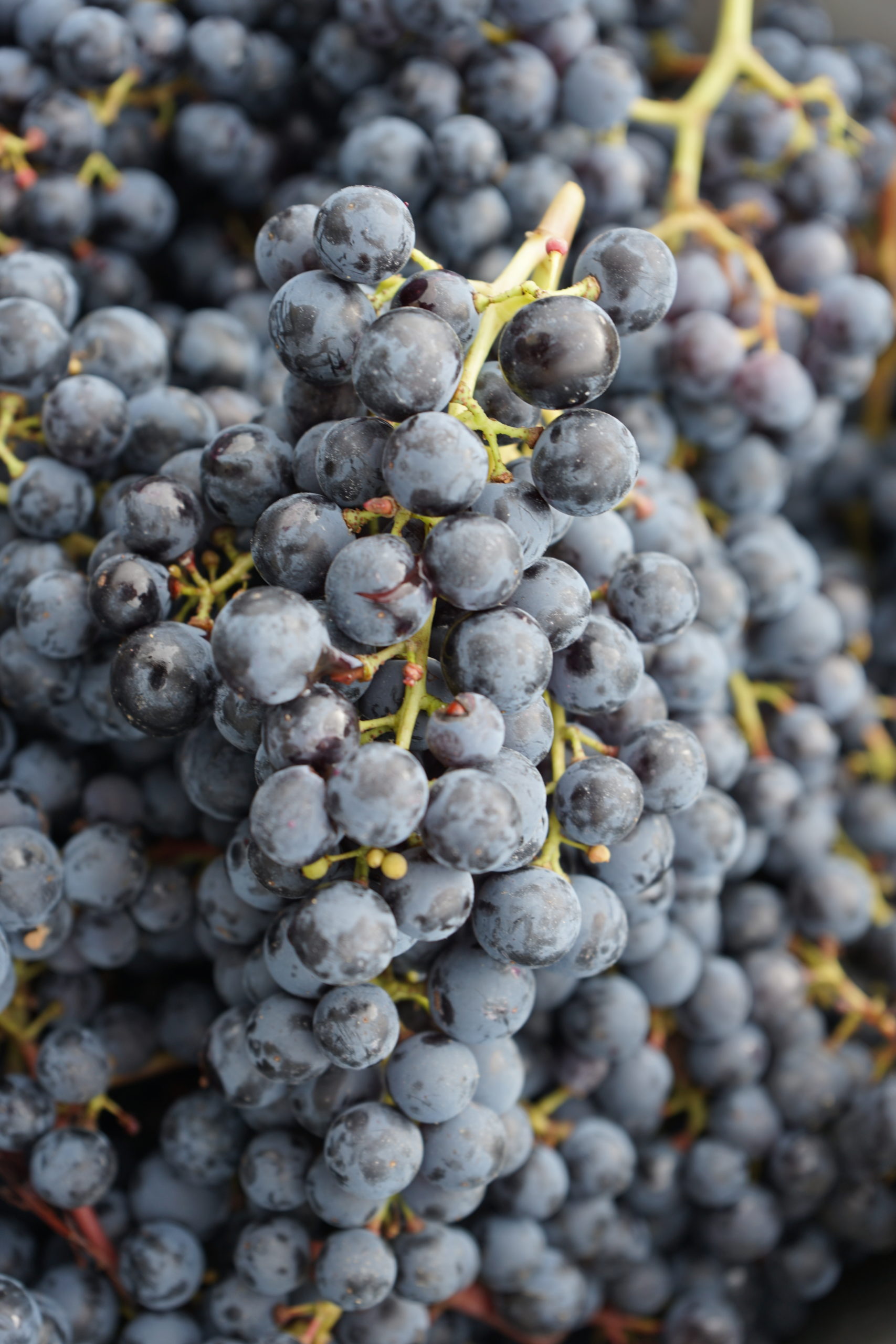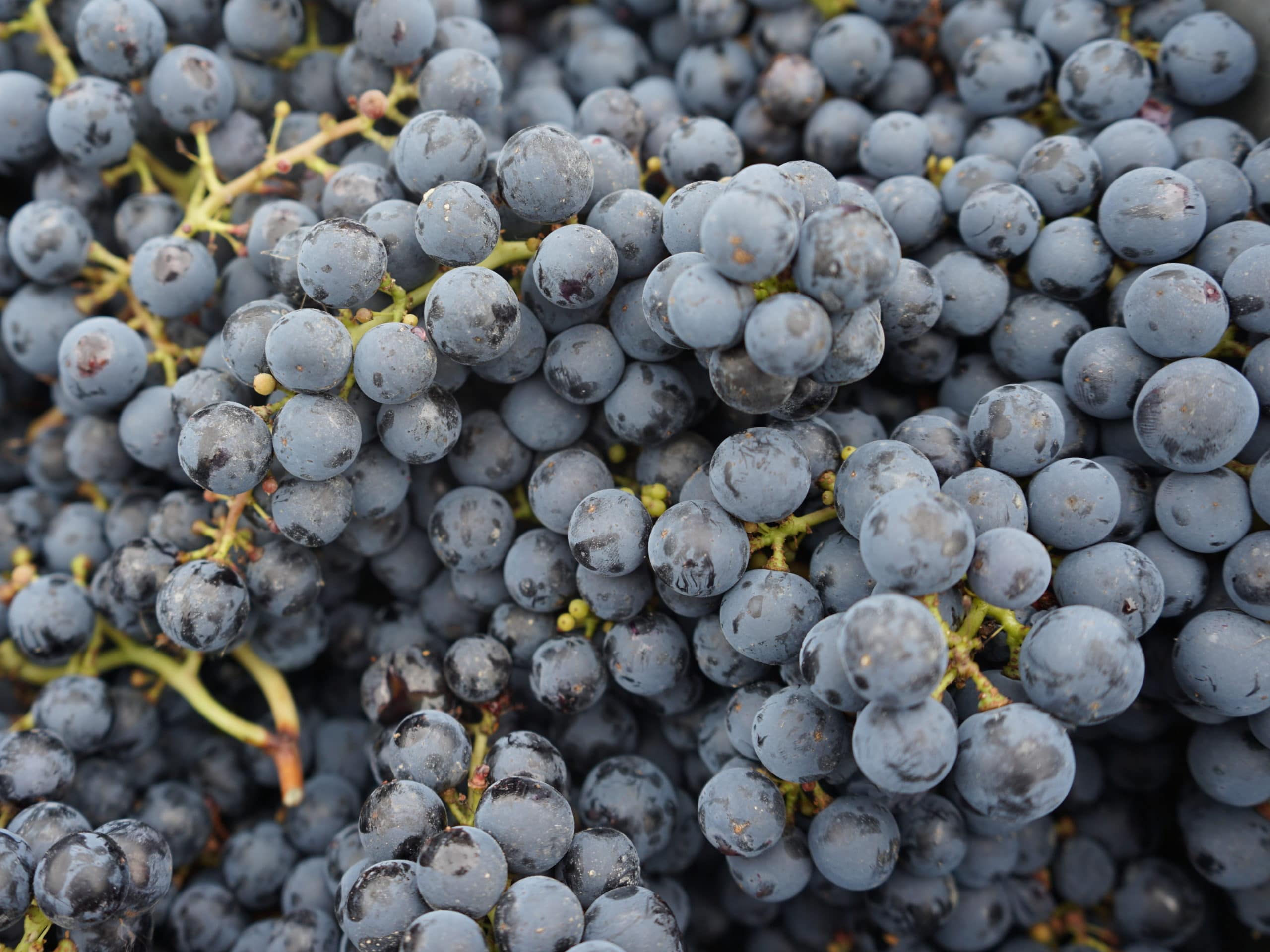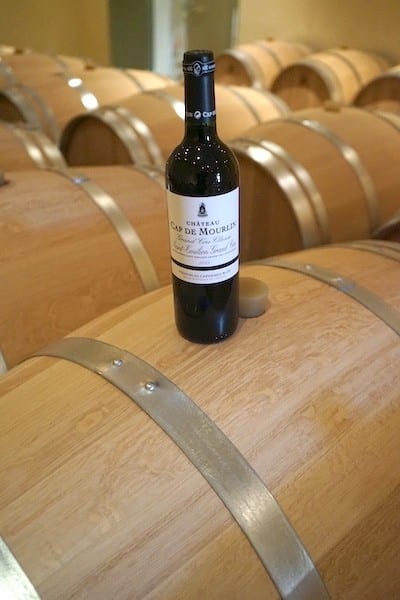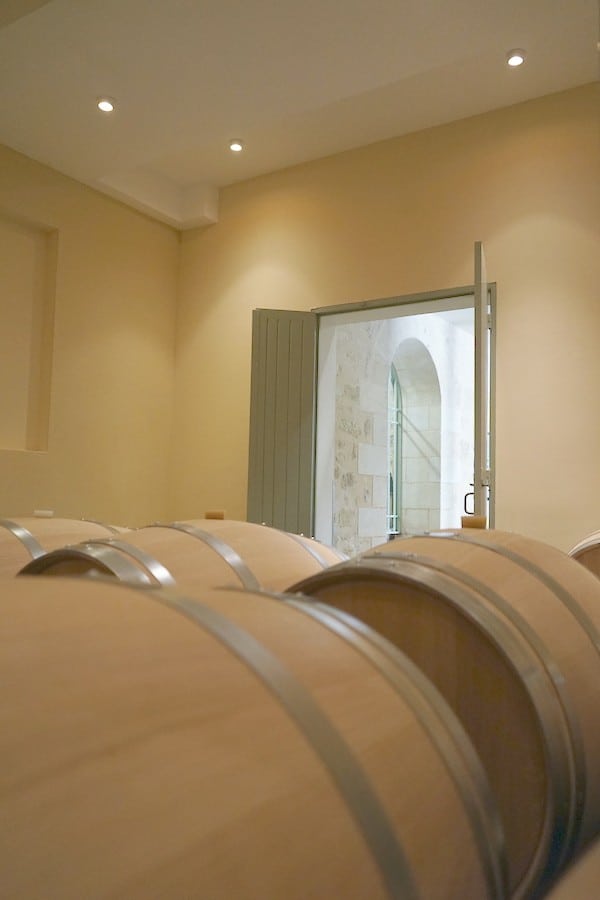

The harvest
The date of the beginning of the harvest is a collective decision: from the owners to the consultant oenologist Jean-Philippe FORT, from the vineyard manager Daniel DUFFON to the cellar master Rémi AUTIER.
Health status
The vine is subject to the risks of disease and rot depending on the weather conditions.
Leaf removal improves the sanitary state of the harvest by favouring the aeration of the bunches and the use of phytosanitary products.
Grape ripeness
The vineyard manager regularly tastes the grapes as the harvest approaches to determine the maturity of the grapes.
A well-ripened seed has a taste of hazelnuts, roasted almonds.
A ripe skin gives aromas of raspberries and spices.
The refractometer gives a first indication of the degree.
Laboratory analysis
Several berries are picked and sent to the Rolland Laboratory in order to check the polyphenolic maturity.
A CHAI

The harvest is manual and requires a lot of labor.

A laboratory allows us to taste the samples as the wine-making process progresses.

The harvest is a special and festive time. It is the result of a year of work. The grape-pickers take care of the grapes. . The noise of the secateurs starts to resound in the plot in a collective good mood. The cutters check the sanitary state of each bunch before placing them in the harvest baskets. Any fruit that does not meet the quality requirements is rejected. The cut bunches are placed in a bucket which is then emptied into a crate, transported by the carriers to the tractor. The crates are transported at regular intervals to the harvest reception platform in the cellar.



work in the cellar

harvest reception

malolactic fermentation

alcoholic fermentation

breeding
The beginning of the vinification is controlled.
Cold maceration
The pre-fermentation cold maceration is done at a temperature between 10° and 15° for three to five days. To help keep the temperature low, we first use dry ice to protect the grapes from oxidation in the first moments of the harvest. As it heats up, the CO2 becomes a gas, which protects the grapes.
The bubbling aspect of the must during fermentation is caused by the release of carbon dioxide. Since yeasts are sensitive to high temperatures, it is important that the temperature of the tank be carefully controlled continuously. This is the role of the thermoregulated vats which allow to delay the start of fermentation, by keeping the crushed and destemmed grapes at low temperatures. The objective is to start the enzymatic destructuration of the pulp and the film. Thus, by this process, we can gently extract tannins, aromas, pigments. This process has the advantage of developing the fruity and intense character of the fruit.




Pumping over is a crucial step in the winemaking process. The technique of reassembly by diffusion with a nitrogen cane consists in injecting gas under the marc cap. A cane equipped with diffusing tips is introduced into the tank. Injection of gas at different pressures for a few minutes causes liquid to rise through the cap and dislocate the cap.
This process has a significant impact on the qualitative extraction of color, fruitiness, roundness and quality of the wines.
malolactic fermentation



The wine is aged in 225-liter barrels. The choice of wood and the intensity of burning of the barrels are essential in the final taste of the wine. The French oaks of the Tronçais forest are recognized as exceptional because the grain of the wood is exceptionally dense and fine and brings to the wine flavors of unequalled finesse. Depending on the year, the wine can be aged with up to 50% new wood. The contribution of tannins by the wood is then extremely important and only the very concentrated grapes justify it. This explains the vanilla or roasted aromas. On the other hand, maturing in new wood strengthens the structure of the wine, helping it to age for decades while the woody aromas gradually fade with time.











